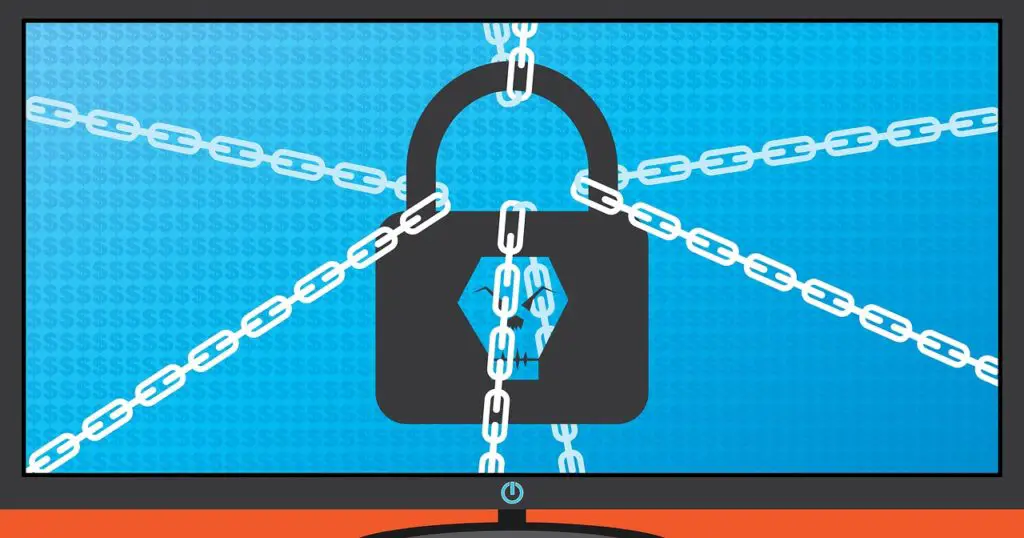Amidst our rapidly advancing digital world, the specter of ransomware looms ominously, posing a significant threat to individuals, businesses, and even government institutions. As the tactics employed by cybercriminals become more sophisticated and relentless, the need to understand the inner workings of ransomware and fortify our defenses against it becomes increasingly critical.
In recent years, ransomware attacks have employed various advanced techniques to bypass existing security measures to infect operating systems successfully, encrypt data, and, hopefully, extort money from unsuspecting victims. Luckily, the cybersecurity community doesn’t sit idly and actively studies the many ransomware programs to find suitable countermeasures.
This guide will shed light on the complex realm of ransomware, its far-reaching repercussions, and the proactive measures businesses and individuals can take to shield against this ever-persistent threat. So, with all that said, let’s begin.
What Is Ransomware?

Ransomware, short for “ransom software,” is a malicious and sophisticated form of cyber threat that operates with a single, sinister objective: to encrypt a victim’s data and subsequently extort a ransom for its release. The concept behind ransomware is akin to a digital hostage situation, with cybercriminals wielding encryption keys as their potent bargaining chip.
When ransomware successfully infiltrates an operating system or network, it carries out a nefarious act by rendering the victim’s files entirely inaccessible, effectively imprisoning them behind an impenetrable cryptographic wall. This malevolent software is not merely a nuisance; it represents a highly lucrative criminal enterprise that preys upon individuals, corporations, and even governmental bodies.
Also read: 8 Best Online Virus Scanners for Files
How Ransomware Works
To understand how to protect against ransomware, it’s crucial to comprehend its inner workings. The typical ransomware attack lifecycle can be broken down into several distinct stages:
Infection Vectors
Before ransomware encrypts your files, it must first enter your system. This typically occurs through various infection vectors:
+ Malicious Email Attachments
One of the most prevalent and insidious methods cybercriminals employ to propagate ransomware is through malicious email attachments. In this scheme, attackers carefully craft deceptive emails, often impersonating trusted entities or colleagues, and attach files harboring malicious code. When unsuspecting victims open these attachments, they unwittingly unleash the ransomware into their system.
The danger doesn’t end with opening the email; it merely marks the beginning of a potential cyber catastrophe. In some instances, the malware remains covertly hidden within the victim’s system, silently executing its operations. In others, it springs into action immediately, initiating the encryption phase that renders files inaccessible and sets the stage for extortion.
+ Phishing Links
Phishing, a crafty form of cyber manipulation, continues to be a favored entry method for ransomware attacks. Phishing and ransomware are often interwoven, creating a potent combination that preys on human vulnerability. Victims fall victim to the art of deception as they are enticed into clicking on seemingly legitimate links that lead to websites harboring ransomware.
These deceptive websites are not merely repositories for malicious software; they are cleverly designed to exploit vulnerabilities within web browsers or plugins, allowing the ransomware to be surreptitiously installed on the victim’s system. The synergy between phishing links and ransomware underscores the need for heightened vigilance and robust cybersecurity practices.
+ Malicious Downloads
An entry form similar to the previous two, malicious downloads are yet another way to infect your system with potential ransomware files. Unsuspecting individuals often expose themselves to these threats by visiting untrustworthy websites and downloading software from unverified sources. Cybercriminals exploit this proclivity by utilizing fake downloads or compromising otherwise legitimate software, effectively transforming them into Trojan horses for successful ransomware attacks.
These compromised downloads may masquerade as legitimate software updates, enticing users to install them unknowingly. Once executed, the ransomware concealed within the compromised download infiltrates the system, initiating the encryption process and holding files hostage until a ransom is paid.
+ Exploiting Vulnerabilities
Ransomware attackers are adept at capitalizing on weaknesses present within software systems, making the exploitation of vulnerabilities yet another favored avenue for gaining illicit access to targeted systems.
These vulnerabilities serve as digital backdoors, providing cybercriminals with an entry point to unleash their ransomware infection with devastating consequences. The inherent danger lies in the failure to promptly update operating systems and software, which renders systems ripe for exploitation and vulnerable to ransomware attacks.
Execution and Encryption
Once inside a system, ransomware executes its malicious code. It rapidly encrypts files using strong encryption algorithms, rendering them unreadable without the decryption key. The speed and efficiency with which this encryption occurs are one of the hallmarks of ransomware.
Throughout the years, ransomware attacks have evolved into formidable threats. Current ransomware variants are built with double extortion capabilities, essentially encrypting and stealing the victim’s data, putting more pressure to cave into the attackers’ ransom demand.
Ransom Note and Payment
After encrypting files, ransomware displays a ransom note on the victim’s screen. This note contains instructions on how to pay the ransom, usually in cryptocurrency like Bitcoin or Monero, to receive the decryption key. The note often includes a countdown timer, adding urgency to the victim’s decision-making process.
Ransom Payment and Decryption
Upon receiving the ransom, the cybercriminals provide the victim with the decryption key, allowing them to regain access to their infected files. However, there are no guarantees that paying the ransom will result in the return of your data. In some cases, victims are left empty-handed even after complying with the attackers’ demands.
With that said, ransomware attackers will generally respect the “rule of the game” and will return access to encrypted files and systems.
The Impact of Ransomware
Ransomware attacks are not merely digital inconveniences; they can have severe real-world consequences. Let’s examine the impact of ransomware in detail:
Financial Consequences
The financial toll of a ransomware attack can be staggering. Organizations may be forced to pay substantial ransoms to regain access to critical data. Additionally, costs are associated with investigating the breach, implementing security measures, and potentially legal repercussions. The financial burden can cripple businesses, particularly smaller ones.
According to Statista, the annual money received by ransomware attackers in 2022 was $457 million.
Reputational Damages and Loss of Customer Trust
Beyond the financial cost, ransomware attacks can tarnish an organization’s reputation. News of a breach can erode customer trust and confidence, leading to a loss of clients and revenue. Rebuilding trust can take years and may be impossible for some businesses.
Data Loss
In some cases, victims of ransomware attacks opt not to pay the ransom. This choice can result in permanent data loss, which can be catastrophic for businesses or individuals who rely on that information for critical operations.
How to Protect Against Ransomware
Given the dire consequences of ransomware attacks, it is imperative to take proactive measures to protect against them. Here are some effective strategies:
Regular Backups
Frequent and comprehensive data backups are a critical defense against ransomware. By regularly backing up your data to offline or isolated storage, you can ensure that even if your primary system is compromised, you have a clean copy of your data that is not under the attacker’s control. A crucial safety mechanism is to test your backups regularly to ensure their integrity.
Incident Response Plan
Having a well-defined incident response plan in place is essential. This plan should outline the steps to take in the event of ransomware threats, including who to contact, how to isolate affected systems, and when to involve law enforcement. A well-prepared response can mitigate the damage and speed up recovery.
User Education
Human error is often the weakest link in cybersecurity. Therefore, training employees and users to recognize phishing emails, suspicious links, and potential threats can go a long way in preventing ransomware infections. Regular security awareness training should be a part of any organization’s cybersecurity strategy.
Email Security Measures
Since many ransomware attacks originate from phishing emails, implementing robust email security measures that can detect ransomware is crucial. Use email filtering solutions to detect and block malicious emails before they reach users’ inboxes. Additionally, encourage the use of multi-factor authentication to add an extra layer of your email and anti-ransomware protection.
Network Segmentation
Segmenting your network can limit the lateral movement of ransomware within your organization. If one segment is compromised, it makes it more difficult for the malware to spread to other parts of the network. This can buy valuable time for detection and containment.
Modern Authentication Protocols
Implementing strong authentication protocols, such as single sign-on (SSO) and zero-trust security models, can reduce the attack surface for ransomware. By requiring robust authentication for access to sensitive systems and data, you can make it more challenging for attackers to infiltrate your network.
Also read: 9 Best Free Antivirus Software for Windows
Wrapping Up
Ransomware is a highly sophisticated and dangerous threat that can cause significant harm to individuals and organizations alike. Understanding how ransomware works and adopting a proactive cybersecurity approach is essential for your organization’s protection. From regular backups to a well-thought-out incident response plan, user education, and email security measures, you can bolster your defenses against this evolving menace.
Prevention is often seen as the best course of action against many evolving ransomware variants, so being prepared makes your organization far less likely to become a victim.
